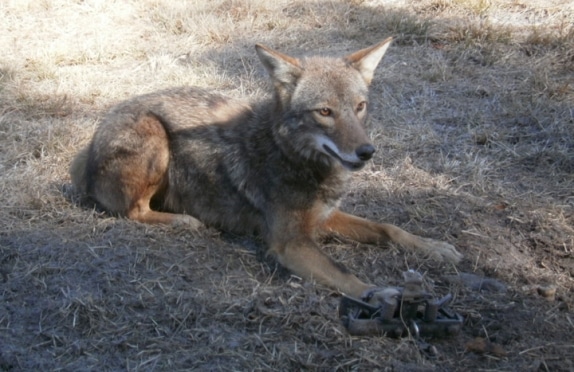Scientific research confirms that effective trapping prior to the annual fawn-drop can, in some instances, improve fawn survival rates depressed by predators. For deer hunters in many areas, trapping has become a vital addition to their QDM skillset, and as a trapping instructor I am getting more requests from groups like QDMA to provide advice. In a recent article in Quality Whitetails, I provided guidance to help QDMA members get into trapping.
Beginning trappers make a number of mistakes that educate coyotes, making them even more difficult to catch. Here are the five most common mistakes to avoid:
Using Little or No Pan Tension
Pan tension is the amount of weight required to fire the trap. The ideal tension on the trap’s pan is around 4 pounds, which helps ensure more solid foot-catches on coyotes and fewer “pullouts.” Devices are available at trapping supply outlets for checking pan tension, or you can design your own. Simply fill some empty plastic bottles with sand and weigh them. If you set a 3-lb. bottle on the pan and the trap doesn’t close, but a 4-lb. bottle triggers the trap, you know the tension is between 3 and 4 pounds.
Not Taking Advantage of the Predominant Wind Direction
Locate traps on the upwind side of the coyote travel corridor you are targeting, based on predominant wind direction, so that a passing coyote is more likely to smell the bait or lure you are using. If wind direction is difficult to predict in a good location, set multiple traps to ensure the coyote smells one of your sets no matter the wind direction. You may even get a double catch.
Not Setting Traps Where Multiple Habitat Features Intersect
Coyotes will conserve energy as they travel from one location to another by taking the path of least resistance. I want to set my traps where those travel corridors intersect. When I talk about a primary set location, I am looking for an area that has four, five, or more habitat features that come together. When you find travel corridors, different habit features, culverts, ditches, crop changes, corners of fields, railroad tracks, pipelines, or road intersections that come together, you know you are setting traps at the right location.
Using Too Much Lure and/or Bait
Where and how you set your traps is more important than bait. One of the top two mistakes I see beginners make that will educate a coyote quickly is using too much lure/bait, thinking that magic potion is the key. The key to catching coyotes is setting properly bedded traps in the right location. Think of lure/bait as an aid that helps you catch more coyotes, but it is not the reason you are successful. The question I get the most often is: “What kind of lure/bait do you use?” A better question to ask is, “Where and how do you set your traps?”
Not Bedding the Trap Properly
“Bedding” refers to placing the trap solidly in the hole you have dug for it, with solid support beneath the entire trap. A well-bedded trap won’t shift or move if the coyote steps on parts other than the pan, which is critical. If the trap shifts, the coyote will be gone, and he’ll be educated. He’ll be that much more difficult to trap in the future.
About the Author: Todd Menke is a certified wildlife biologist, volunteer Hunter Education Instructor, and the Education Coordinator for the North Carolina Trappers Association. He has contributed to Quality Whitetails magazine and has been a featured speaker at QDMA’s National Convention and Branch events.
